
When you have the option of Contax SLR bodies like the 139 Quartz or 167MT, is there any value or purpose in owning a Yashica body in the same C/Y mount?
Earlier this year, I discovered the Contax 139 Quartz. It was a complete game changer for me.
Previously I’d loved Pentax with their Spotmatics and S1a in M42 mount, and KM, K1000, ME, ME Super et al in K mount.
Takumar lenses are probably still my favourite I’ve ever used, and Pentax-M lenses like the 50/1.7 and humble yet hugely capable 50/2 aren’t far off the Taks either in performance or smoothness.
But the Contax was simply a different class, the most deliciously luxurious SLR I’d ever used.
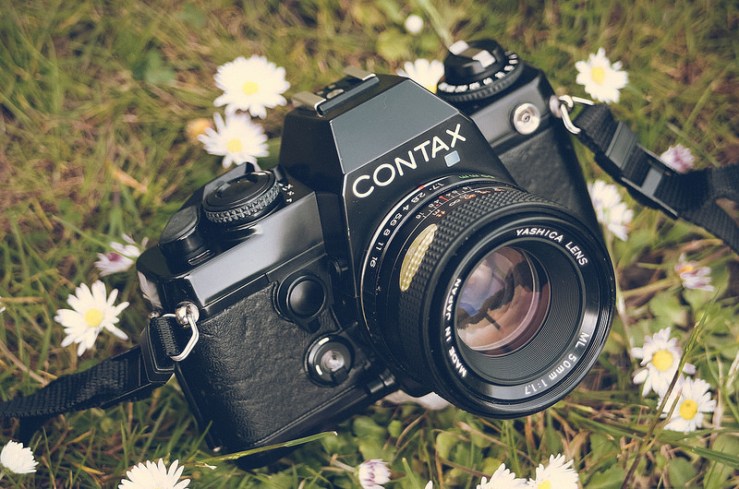
The Yashica ML 50/1.7 lens I had initially for the 139 Quartz was a bit of a slow burner, and I wasn’t sure I liked it at first.
But now I’ve gathered more than enough favourite shots with it to feel it’s earned its place on a Contax body.
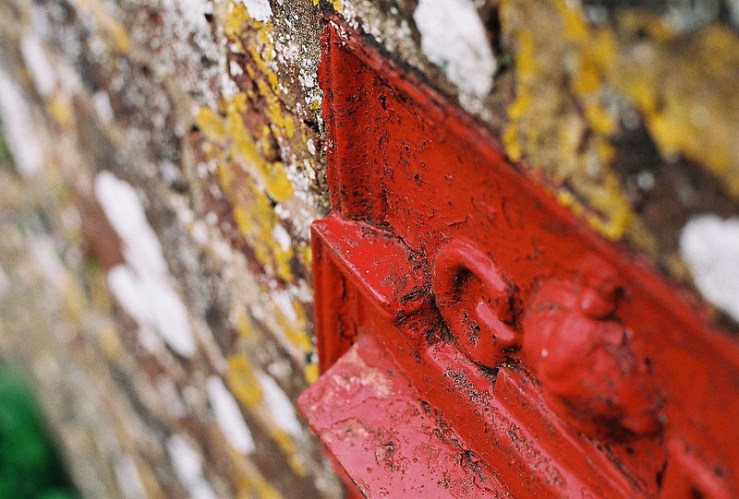
Not long after the 139 Quartz I came across its close cousin, the Yashica FX-D Quartz, first in silver, then a black version.
If I’d never used a Contax SLR, the Yashica FX-D would easily be my favourite SLR I’ve ever used.
Even with my Contax bodies (which now number five), the FX-D is still 95% as great and as smooth to use, and is a true class act.
So I always have half an eye out for similar FX bodies.
Very recently, along came an FX-3, looking somewhat tired and in need of some TLC, with a DSB 50/1.9 lens.
I’ve had the same lens before, and whilst it was certainly more than competent, I didn’t feel it rivalled the ML 50/1.7 somehow.
Looking back now at the shots I did get though, I’m pretty happy with the best of them, and having browsed photographs others have taken with the same lens, I’m excited to give it another chance.

As to the camera, I’ve read much about the FX-3, mostly that it’s thought by many to be the most robust, reliable, practical and affordable route to using Zeiss C/Y lenses, not to mention the none too shabby Yashica range of lenses, in particular the ML (Multi Layered) versions.
But now to the core question of this whole post.
With five Contax bodies – two 139 Quartz, a 159MM, 167MT and 137MA – is there any point in having a Yashica C/Y mount body at all?
I think there are some strong arguments.
First, let’s consider the FX-D.

As I said, it’s really a close cousin of the Contax 139 Quartz and feels similarly well made. The viewfinder also looks looks nearly identical. It’s a fraction less bright, but still very good, and one of the best I’ve experienced.
The FX-D has similar operation in that you push a button where you forefinger rests on the front of the camera to engage the lightmeter, the wind on is very smooth, and the shutter button has a luxurious soft touch action like the 139.
Yes, if I had to pick the FX-D or the 139, I’d pick the latter, for that extra maybe 5% of smoothness it offers, plus a depth of field preview button and aperture readout in the viewfinder.
But when you consider cost, the choice changes.
Both FX-Ds I’ve had were fully working and cost around £20. The Contax 139s cost around £55, as did nearly all of my other Contax bodies. Still not expensive for what they offer, but obviously far more than £20.
If you’re on a tight budget for an SLR, the FX-D is a steal. I wouldn’t look at anything else.
Alternatively, that £35 difference could go towards a(nother) lens. The excellent Yashica ML 50/1.7 I have cost this side of £30. The optically near identical 50/2 versions are very common, as well as being a little lighter, and can be had for under £20.

So for £40 you could have a fully working FX-D plus ML 50/2 lens that will be a joy to use and take fabulous pictures all day long.
It’s an incredibly tantalising prospect.
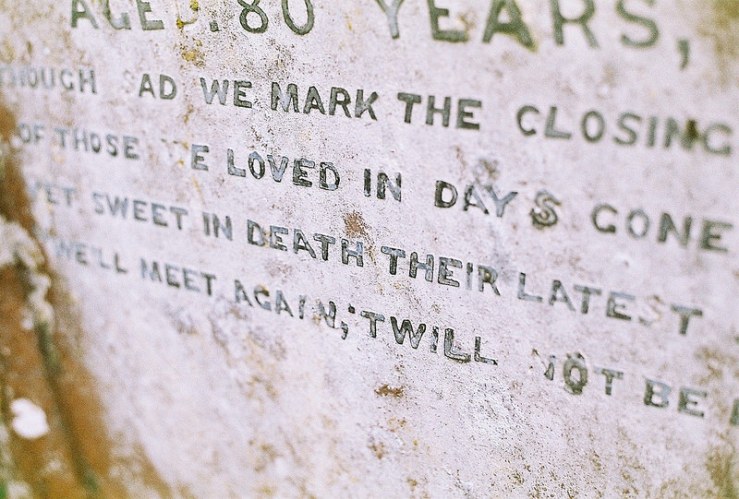
Especially when the Contax 139 and Zeiss Planar 50/1.7 equivalent set up will likely cost you four times that.
What about the FX-3?
From my initial experience of the FX-3, despite appearing very similar to the FX-D, it’s a very different camera.
Not surprisingly as I believe these were based on a Cosina camera already in existence, and presumably the FX-3 was made by Cosina, rather than the Kyocera parent company that made both the FX-D and the Contax 139 Quartz.
If you’re looking for a similar quality and feel to the 139 or FX-D, you’ll be in for a let down. The FX-3 is primitive and no nonsense, pure function over flair.
If we put the feel of the camera aside (as many do), it’s not without considerable pros.
First, it’s fully mechanical.
All five of my Contax bodies, plus the FX-D are battery dependent and are useless without them.
The FX-3 needs batteries only for its meter – all its core functions are mechanical.
Also, it’s lighter than the FX-D or Contax. Paired with something like the Yashica ML 50/2, it makes a very compact and nimble set up.
The viewfinder is not up there with the FX-D or 139, but it is still very respectable and usable. Plus it’s more stripped down with nothing to clutter the main compositional rectangle if you’re not using the meter, and even if you are, just a simple +, – or green LED to indicate exposure.
Being mechanical, and with that minimal meter display, you can easily use it either shutter or aperture preferred.
True, the camera won’t automatically select the aperture or shutter speed for you. But if you choose either your required aperture or shutter speed in any situation, then adjust the other until the green exposure light is on, it’s simple yet flexible.
Last but not least, is its cost.
My fully working FX-3 (including the meter!) came with a DSB 50/1.9 lens, also in full working order and very clean, for less than £10. Well, £8.77 to be precise.
This is a cost that would make the cheapest of cheapskates smile.
My aforementioned previous 50/1.9 DSB lens gave me some decent pictures before (especially with a few months distance from them), and I want to give this example a few more opportunities.
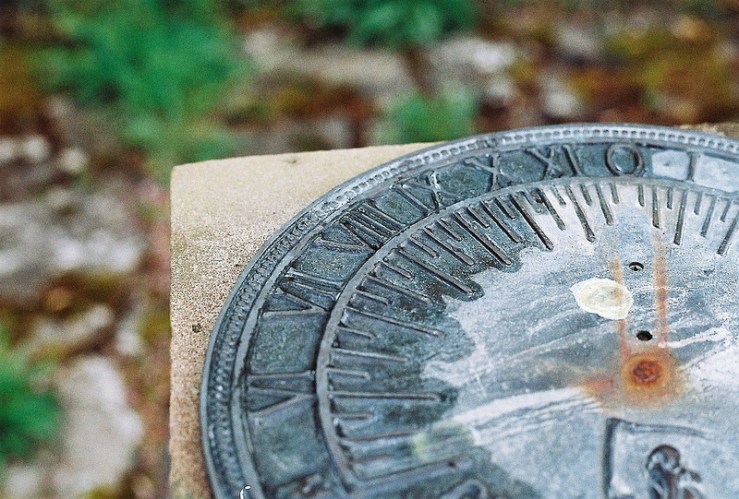
One aspect I haven’t mentioned is the M42 option.
The reason I tried a Contax 139 Quartz in the first place was because after using Canon, Olympus, Pentax, Konica, Minolta and more, I’d decided that overall my favourite lenses were M42 mount. So I wanted a compact, classy, aperture priority body to use them on, when I wasn’t guessing Sunny 11 exposures using my all manual Fujica ST701 or Pentax Spotmatic F bodies.
A simple adapter is available that allows M42 lenses on Contax/Yashica (C/Y) mount bodies.
This M42 set up has given new life to the likes of my Takumar and Helios lenses, as well as given me the Zeiss option that ties in back in with the Contax heritage.
My Contax 139 with Carl Zeiss Flektogon 35mm f/2.4 lens is pretty much the most perfect SLR set up I’ve yet experienced.
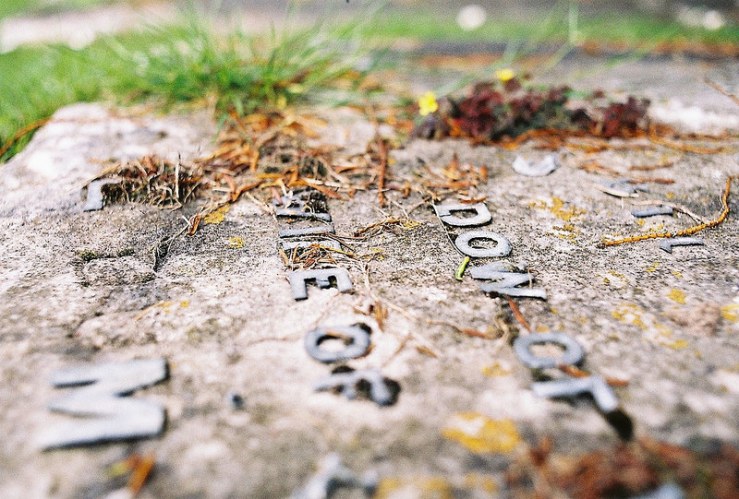
The Pancolar 50/1.8 and Sonnar 135/3.5 M42 lenses I also have make up a near unsurpassable trio.
And all were considerably cheaper than their C/Y mount Zeiss equivalents.
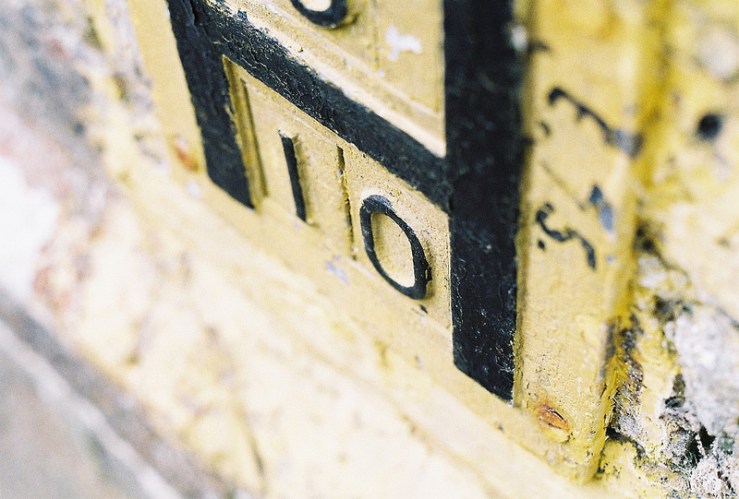
So going back to the FX-D or FX-3, if you want to use the widest and arguably most competent range of lenses ever made, invest in an M42>C/Y adapter for around £15.
Looking at lower cost options than the M42 Zeiss trio, a Takumar 55mm is a superb lens and probably the smoothest handling lens I’ve ever used. The 55/1.8 version should cost around £25 upwards, but for better value seek out a 55/2 which is near identical and will give you indistinguishable results, for £20 or less.
I have an Cosinon Auto 135/2.8 that was £19 and has given stunning results when experimenting on my NEX. Yes, this is a digital image, but I felt it justified to show what the Cosinon can do.




Awesome review. I came across a Yashica FX-7 (basically a silver FX-3) for $13 in a local thrift store. The ML 50mm f/2 had a healthy fungus infestation and the leatherette was in typically bad shape, but the camera was fully functional.
After a new leather kit and a replacement ML 50mm ($38 total) this camera sold me on Yashica.
I’ve since acquired a FX-D and a Contax 139 Quartz, along with a Planar 50mm f1.4 and Tele-Tessar 200mm which have become my favorite cameras along with my Minoltas.
Rob, thanks for your comments. The Yashicas are great, and as I say, perhaps 95% as good as the Contax 139Q they’re sister cameras to.
I could never stretch to a Planar 50/1.4. Tried the 50/1.7 but was really disappointed. Nothing wrong with it, but I was hoping for something special. I’d rather use a Pentax-M or -A 50/1.7, any Rokkor 50/1.7, or even better a Takumar 55/1.8, all of which are vastly cheaper and easily as good, in my opinion. But then I’m generally put off my anything that seems unnecessarily expensive!
I agree on the lenses you called out. I happen to own all of those and they’re all amazing. I would have been happy with the Yashica ML 50mm f1.7 (I have the f2 and it is a great lens) but they’re surprisingly hard to come by at an uninflated price. The Zeiss lenses were opportunistic finds at a decent price in near mint condition.
I actually got into film quite by accident. I was acquiring fast lenses to adapt to my E-M10 Mk II and one day realized had this small collection of film bodies so I thought, “why not shoot some film?” That’s when I discovered how great some of these old cameras are. Most of my cameras and lenses have been thrift store finds, so I’ve been able to build quite the collection on the cheap.
The thing I appreciate about shooting film is that it has made me a better digital photographer. I find myself being much more deliberate about what I’m shooting and how I’m shooting it.
Rob, thanks for your comments.
The Yashica MLs are brilliant lenses, and very good value in my view compared with the Zeiss lenses. If you want to shoot Contax or Yashica bodies, they’re an excellent choice. Especially the 50/1.7.
I actually ended up selling all my C/Y lenses because my absolute favourites are all M42. An adaptor for M42 lenses on a C/Y body is cheap and effective, so that’s the route I went. A Contax 139Q with a Takumar 55/1.8 is a delicious combination, probably the most luxurious combo I’ve ever used.
I did a similar thing as you with lenses for some mounts – starting out buying the lenses to use on my Sony NEX digital with an adapter, then being curious about the original bodies the lenses were made for and trying out a few of those.
Thanks for your write-up. The first time I looked through a Contax viewfinder (137 MA) it was a revelation in terms of brightness and sharpness. I bought one, and later an FX-D, which is noticeably less bright but still good. I finally bought a 139Q, which is gorgeous and so elegant to use. I just found an ST for a price I couldn’t resist, and its viewfinder is even better! The camera handles like a dream, and it’s great to actually see the shutter speeds instead of the dots in the viewfinder.
Aside from my CZ 28 mm 2.8 (which even gives fine results with a teleconverter), I have a Yashica 50 f2, 135 f2.8,Vivitar Series 1 28-90, Kiron 80-200, and two m42 lenses (35 mm 3.5 Super-Tak and 35 mm Yashinon 2.8 DX – which I have’t tried out yet). The 139 or FX-D with one of those primes easily fits into a jacket pocket. The Contax system of cameras are a joy to use, and are ridiculously inexpensive for the quality. Too bad I sold other CZ Lens a long time ago – they are so much expensive now.
Allen thanks for reading and your comments. That sequence of four or five Contax bodies is wonderful, they’re all magnificent in their way and amongst the most impressive and classy 35mm SLRs ever made.
I haven’t shot film in nearly two years but have kept my 139Q, I’m pretty sure I’ll run a film through it at some point with an M42 Takumar or Flektogon!
Very informative article, I’ve been shooting digital for 9 years and wanted a challenge and got into film photography. I am still fairly new to film and started my quest on finding film cameras that suit my style. I stumbled on Pentax Super Program cameras which fit my Aperture Priority approach to shooting, they’re very compact and fit my needs nicely, however I find the shutter and mirror actuations a tad loud, with a bit of vibration. I have already amassed quite a bit of M42 glass, Takumar 50 f/1.4, 55 f/1.8 and f/1.2, 135mm f/2.5 and a 28mm f/3.5. I also have a few 55mm f1.4 Tomioka lenses (Mamiya and Auto Reveunon), Yashica 50mm f/1.7’s and f/1.4. There are too many to list (Jupiter, Helios etc) but I use these lenses adapted to my Olympus and Fuji bodies.
I did a bit of reading before purchasing the two Yashica FX-D bodies (black and silver) and I must say I was very impressed with their build. The body size fits my hand perfectly and the VF is very nice. Lenses balance well/better on the FX bodies compared to the Pentax (quite compact). Because of my large selection of f/1.4 lenses, I wanted to look for another camera body that had a faster shutter speed, and thats where the 167 MT came into possession with it’s 1/4000 shutter speed. I managed to find a Contax 139Q on the same day and got it for $17 on the bay. I can honestly say that the Contax just has that slight bit of finesse over the FX-D, oddly enough, the shutter sound and vibration isn’t that much better on the 139Q. All three cameras, two FX-D’s and the 139Q had to have their covers replaced and costed me all of $12 of leather from Amazon, using the old tattered cover as a template.
I must say, I wished they still made cameras that are built the way these cameras were, solid, mostly metal, and can be used as weapon to bludgeon a thief if threatened ) my XPro1 I think still qualifies). I have gone through once roll of Ilford HP5+ and finishing a roll of Kodak color 200 on the 139Q. I’ll be sending them to be developed after I finish about 5 rolls and will see how well they render, but all in all, the luxury feel of shooting with these classics definitely adds to the picture making experience.
side note: I restore and modify lenses and camera gear, I finally figured out how to fix Contax and Yashica cameras that have dirty electromagnetic contacts (very common problem) without full disassembly of the camera/mirro box.
Reiner, thanks very much for your thoughts. Glad you’ve discovered Yashica, and then Contax.
I’ve had a couple of FX-Ds, a couple of 139Qs, a 159MM, a 167MT, and a 137MA. Oh and an Aria, but it was in bad shape and went back to the seller. Cute camera though!
The build and feel of all of these are excellent, and unlike most stuff we use today. I have only two film cameras left (from 50+ a few years back) and one of them is a Contax 139…
I purchased the FX-3 as my first camera when I was in the high school. Simple, squared away, reliable, easy. Loved it. In college, I got the FX-D, which I still have. The only downside was the AE lock, which period reviews noted would be all too easy to turn on and forget to turn off — and burn the batteries down. Happened all the time.The FX-3 was lost when a pup jumped from the bed and pulled it to the floor with a Vivitar 283 attached.
Back in the days of being broke students, we dropped our film off at the drug store or Jack Rabbit and prints were cranked out of a machine. We had no idea how good our cameras and lenses were. No idea. Then came scanners. I was aghast at the work my little FX-3 and 50 2.0 had done decades earlier without my appreciating it. I’m now back out with my grandfather’s Yashica TLRs and am in the hunt for my favorite of them all, the FX-3.
“Why do you need to do that when you can shoot digitally?” Who said anything about need? I didn’t “need” a camera in high school.
Thanks Steve. I had an FX3 for a while, bought after I had a couple of FX-Ds, and it’s pretty similar in form I recall, just more plastic, and therefore lighter too. The FX-D is without doubt one of the best little SLRs I’ve used, very classy. And the ML lenses are excellent to, I had at least one 50mm f/2, 1.7, and 1.4, a 35mm and a 135mm, and all have been very pleasing.